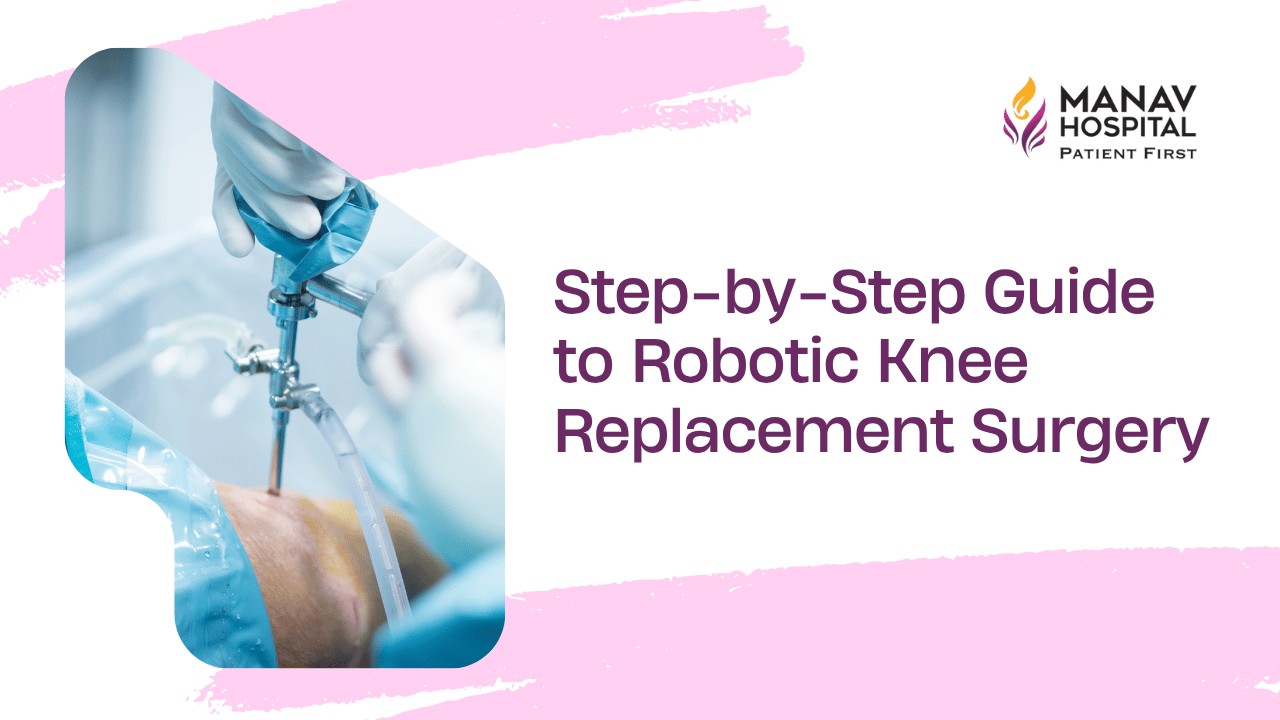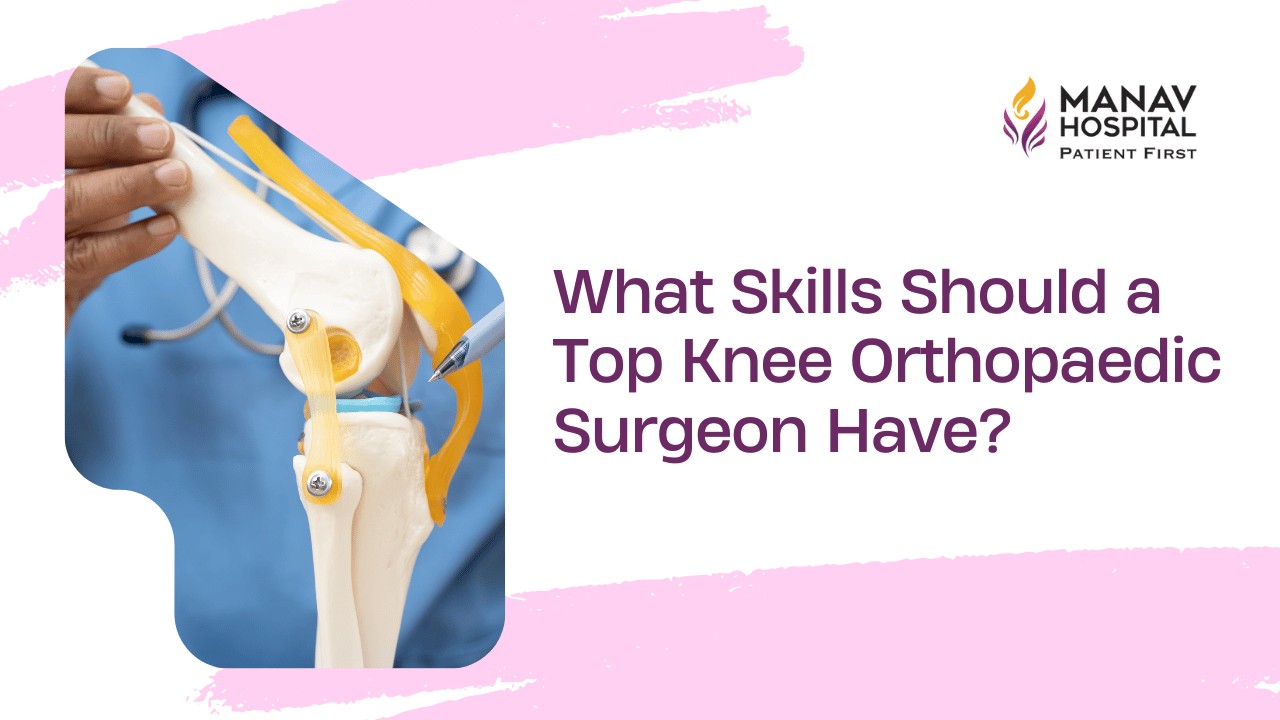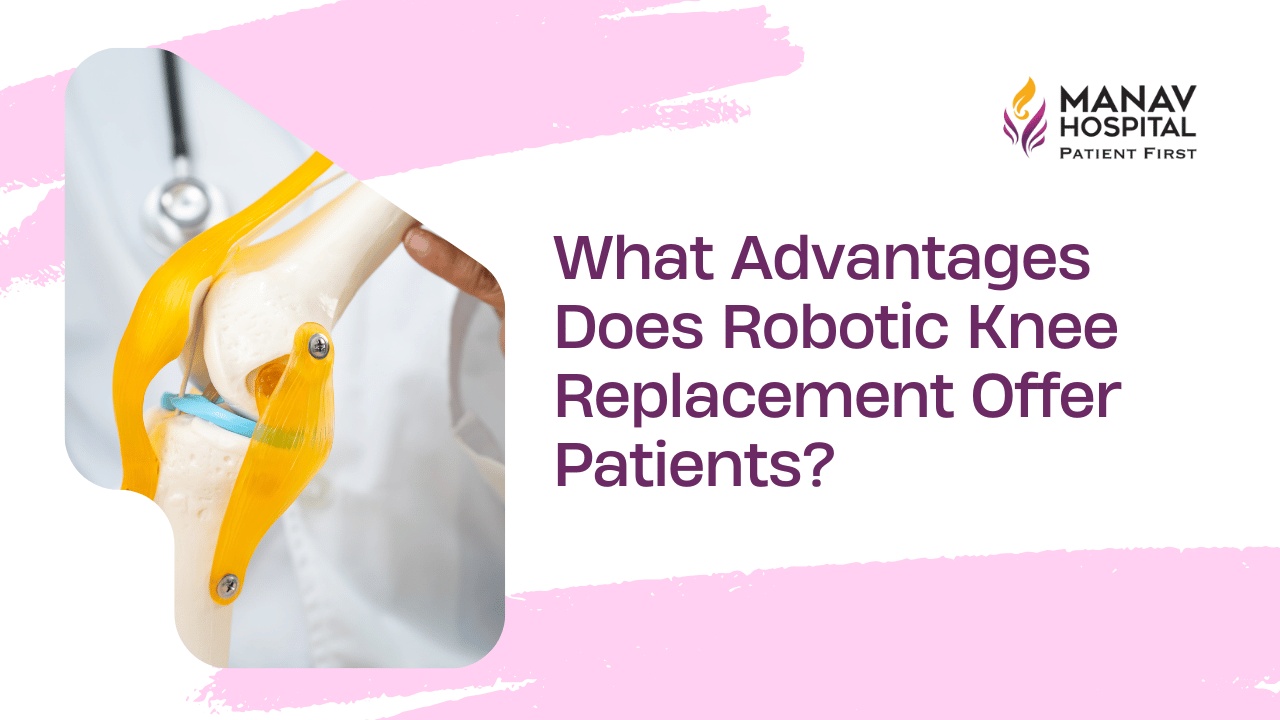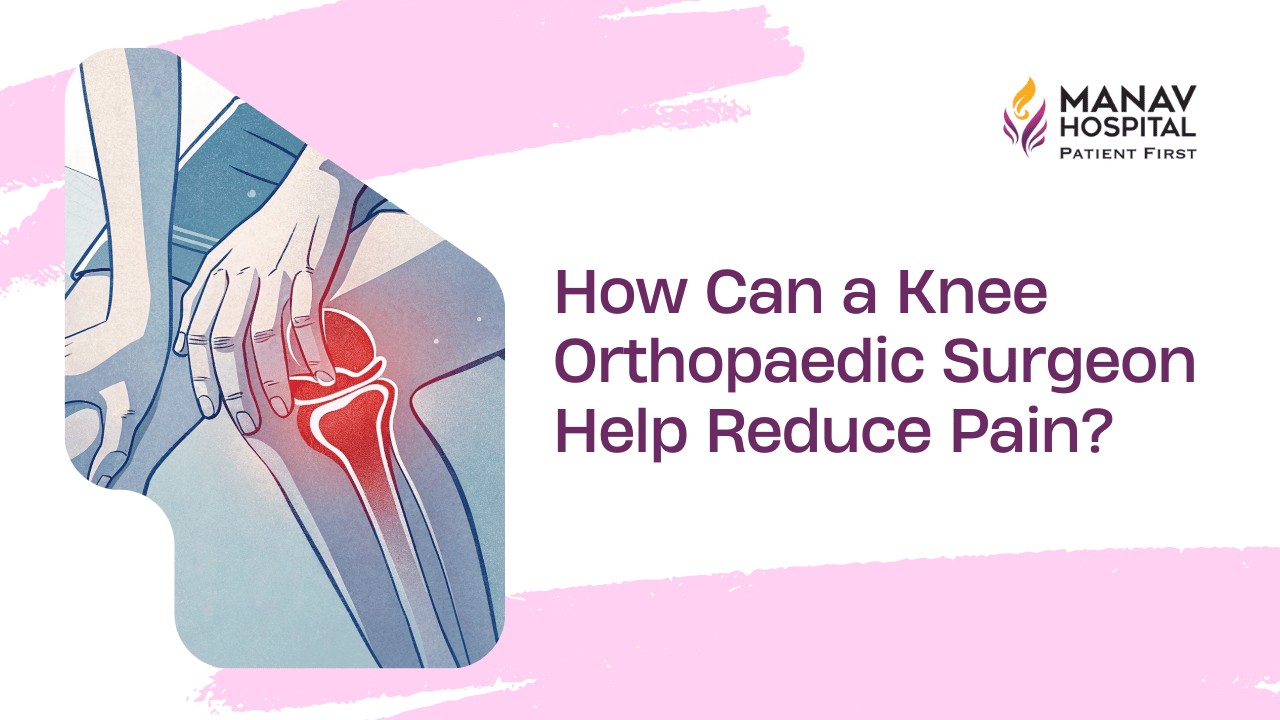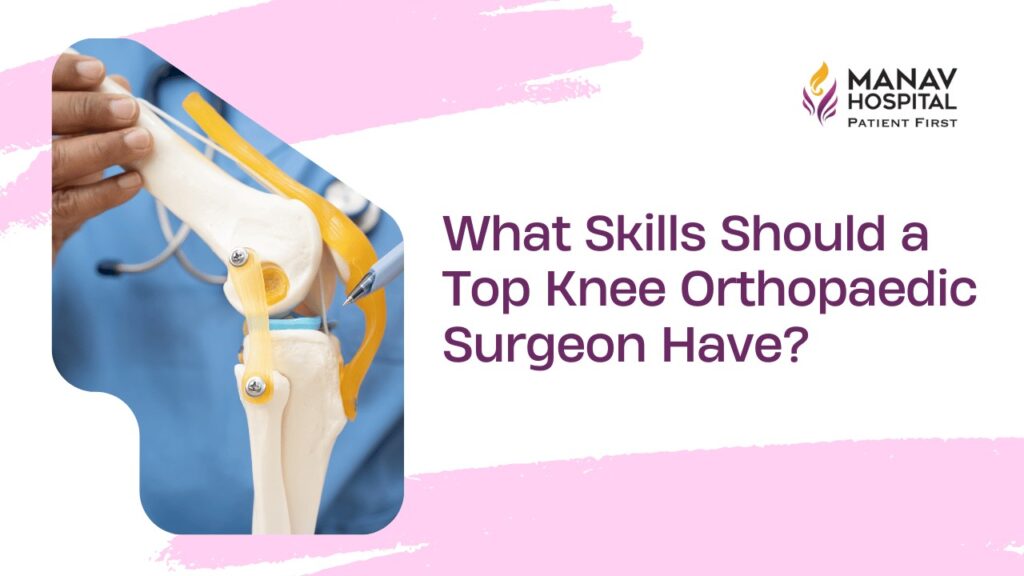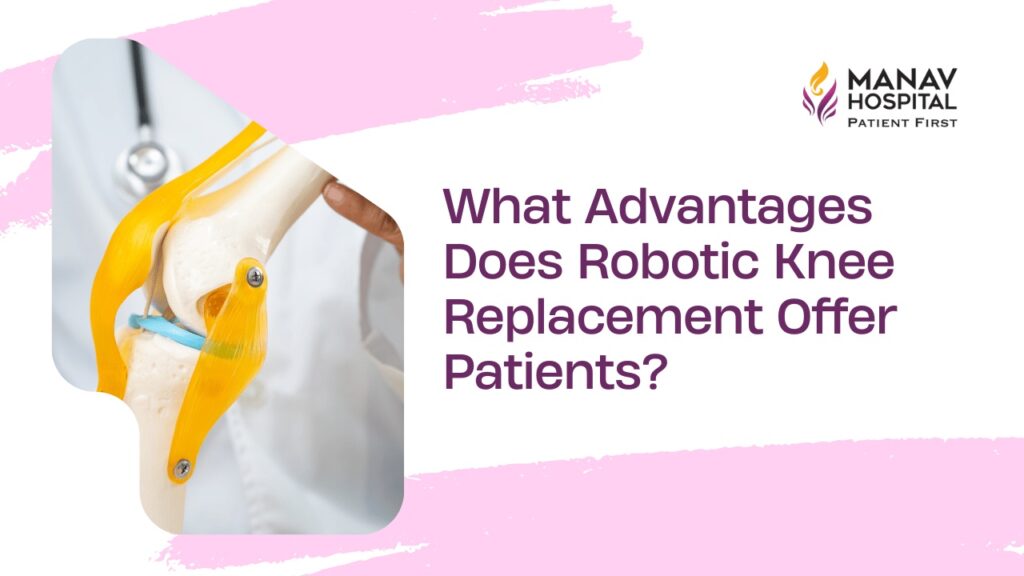Overview
Knee pain can significantly impact your quality of life — making walking, climbing stairs, or even standing for long hours a challenge. For patients suffering from advanced arthritis or joint damage, knee replacement surgery often provides lasting relief. But with medical technology advancing rapidly, robotic knee replacement surgery has emerged as one of the most precise and successful treatment options available today.
At Manav Hospital, patients have access to the latest robotic-assisted knee replacement technology under the expert guidance of Dr. Sharad Gupta, one of Ghaziabad’s most trusted and experienced orthopaedic surgeons. Combining advanced robotics with surgical expertise, Dr. Gupta and his team ensure patients achieve faster recovery, improved mobility, and natural knee function.
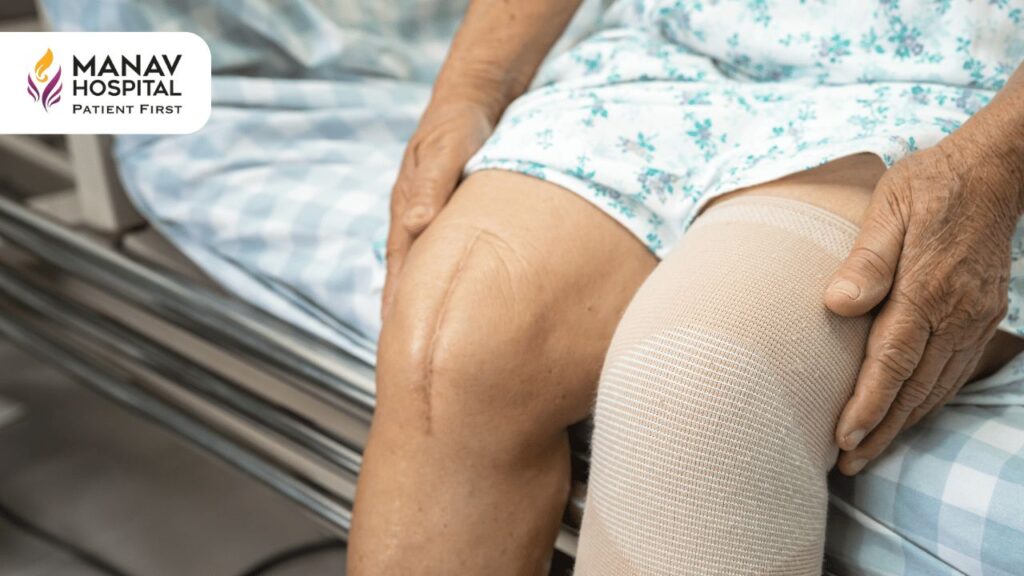
What is Robotic Knee Replacement Surgery?
Robotic knee replacement is a state-of-the-art surgical technique where a robotic system assists the surgeon in performing knee joint replacement with exceptional precision. The robot does not perform the surgery independently — rather, it enhances the surgeon’s capabilities through real-time 3D imaging and computer-assisted navigation.
Unlike traditional knee replacement, robotic surgery allows for accurate implant placement, optimal joint alignment, and minimal damage to surrounding tissues. This ensures less pain, quicker rehabilitation, and longer-lasting outcomes.
Who Can Benefit from Robotic Knee Replacement?
Patients who may benefit from this procedure include those suffering from:
- Osteoarthritis or rheumatoid arthritis of the knee
- Post-traumatic arthritis following an injury
- Severe joint stiffness or deformity
- Limited mobility affecting daily activities
- Persistent pain not relieved by medication or physiotherapy
If you’ve been told you need knee replacement surgery, consulting an experienced orthopaedic specialist like Dr. Sharad Gupta at Manav Hospital can help you determine if robotic knee replacement is right for you.
Step-by-Step Guide to Robotic Knee Replacement Surgery
Here’s how the procedure unfolds at Manav Hospital — one of the leading centers for robotic-assisted orthopaedic care in Ghaziabad.
Step 1: Comprehensive Pre-Surgical Evaluation
The journey begins with a detailed consultation and diagnostic assessment.
- Clinical examination: Dr. Sharad Gupta evaluates the knee’s range of motion, pain level, and overall joint condition.
- Advanced imaging: X-rays and 3D CT scans are taken to create a digital model of your knee.
- Personalized surgical plan: Using robotic planning software, a precise map of your joint is created to plan implant placement with millimeter accuracy.
Step 2: Preparing for Surgery
Before the operation, patients undergo standard pre-operative protocols:
- Routine blood tests and medical clearance
- Medication review (some may need to be paused temporarily)
- Fasting guidelines and pre-surgery instructions
- Physiotherapy advice for post-operative recovery
At Manav Hospital, all surgeries are performed in state-of-the-art modular operation theatres with stringent sterilization and infection control measures. You can explore the advanced infrastructure on the Facilities page.
Step 3: Anaesthesia and Positioning
On the day of surgery, you’ll receive spinal or general anaesthesia, ensuring a painless procedure. The surgical team positions you carefully on the operating table to provide optimal access to the knee joint while maintaining comfort and safety.
Step 4: Robotic Mapping and Planning Confirmation
Before any incision, the robotic system maps your knee’s exact shape and alignment in real-time. This 3D mapping helps the surgeon visualize how much bone and cartilage need to be removed.
Using this data, the system generates a customized surgical plan that aligns the artificial implant perfectly with your knee’s natural motion and structure.
Step 5: Precise Bone Preparation and Implant Placement
Once planning is finalized, Dr. Sharad Gupta uses the robotic arm to remove the damaged bone and cartilage with pinpoint accuracy. The robot ensures every cut matches the pre-planned dimensions, minimizing tissue damage.
After preparing the joint, the surgeon places the prosthetic implant — usually made of medical-grade metal and high-durability plastic — ensuring perfect alignment and balance.
The robotic system provides real-time feedback, allowing the surgeon to adjust even the smallest details for maximum stability and natural knee movement.
Step 6: Wound Closure and Recovery Room Transfer
After the implant is secured, the surgical site is carefully sutured. Patients are moved to the recovery room, where vital signs are closely monitored as the anaesthesia wears off.
Most robotic knee replacement procedures take around 1–2 hours, and patients usually spend 2–3 days in the hospital.
Advantages of Robotic Knee Replacement Surgery
Robotic-assisted knee replacement offers multiple benefits over traditional methods:
- Higher Precision: Millimeter-level accuracy in implant positioning ensures better joint balance and longevity.
- Minimized Tissue Damage: Smaller incisions and precise bone cutting reduce trauma and blood loss.
- Faster Recovery: Patients typically regain mobility sooner and require less physiotherapy.
- Less Post-Operative Pain: Improved surgical accuracy leads to reduced discomfort.
- Enhanced Implant Longevity: Correct alignment increases the lifespan of the artificial joint.
Recovery and Rehabilitation
Recovery begins immediately after surgery with the help of physiotherapists.
- Day 1–2: Gentle knee movements and standing with support.
- Week 1: Walking with a walker or crutches.
- Weeks 2–4: Gradual increase in flexibility and strength exercises.
- After 6 Weeks: Most patients resume light activities.
Following the personalized rehabilitation plan designed by Dr. Sharad Gupta’s team helps ensure faster recovery and better long-term outcomes.
Why Choose Manav Hospital for Robotic Knee Replacement?
Manav Hospital is among Ghaziabad’s top destinations for robotic orthopaedic surgeries. The hospital is committed to offering advanced treatment options with compassion and precision.
Key Highlights:
- Experienced orthopaedic surgeons led by Dr. Sharad Gupta
- Advanced robotic and computer-assisted systems for joint replacement
- Fully equipped modular operation theatres and recovery units
- 24/7 emergency and post-surgery care
- Comprehensive physiotherapy and rehabilitation programs

Conclusion
Robotic knee replacement surgery represents the future of joint care — offering unmatched precision, safety, and faster recovery. At Manav Hospital, patients benefit from the expertise of Dr. Sharad Gupta and a team of dedicated orthopaedic professionals who combine advanced robotics with compassionate care.
FAQs
1. What is the difference between robotic and traditional knee replacement?
Ans. Robotic surgery offers enhanced precision and minimal tissue damage, leading to faster recovery and better implant alignment.
2. Is robotic knee replacement safe?
Ans. Yes. It’s one of the safest and most advanced surgical methods, guided entirely by your surgeon’s expertise.
3. How long does recovery take after robotic knee replacement?
Ans. Most patients resume daily activities within 4–6 weeks, depending on rehabilitation progress.
4. Can both knees be replaced robotically at once?
Ans. Yes, in suitable patients, bilateral robotic knee replacement can be safely performed under expert supervision.
5. Who is the best doctor for robotic knee replacement in Ghaziabad?
Ans. Dr. Sharad Gupta at Manav Hospital is one of the leading specialists in robotic knee replacement surgery, known for his expertise and high success rates.

